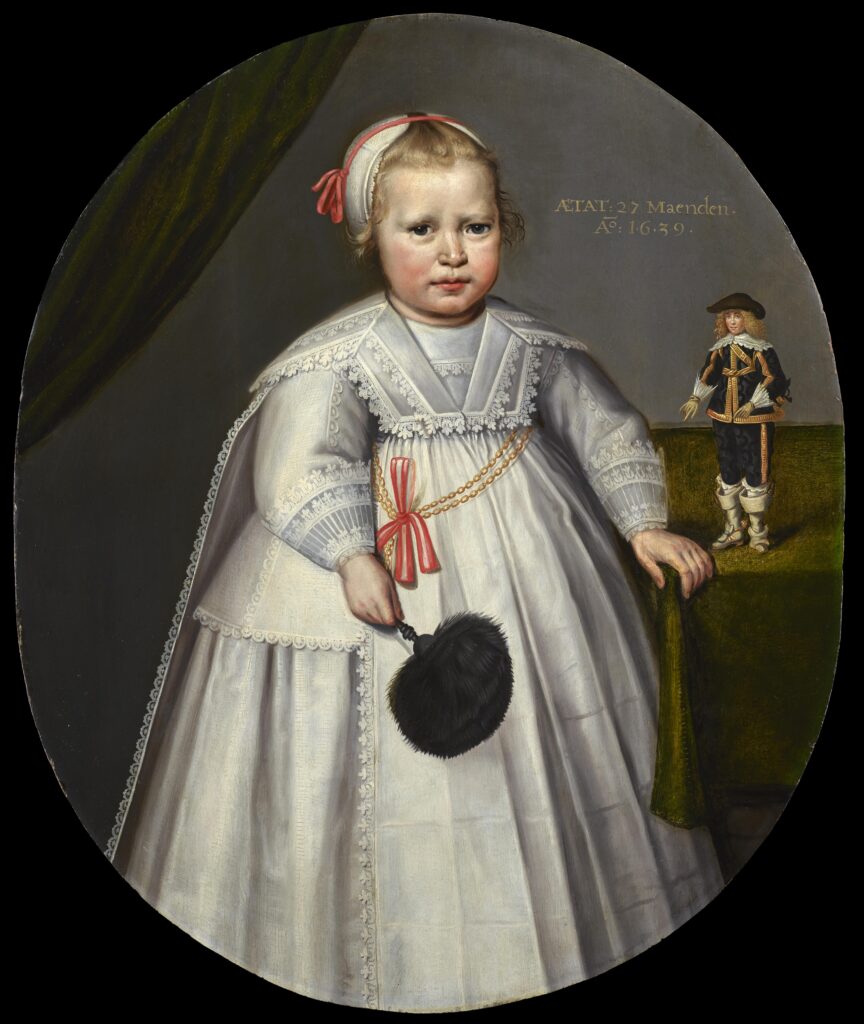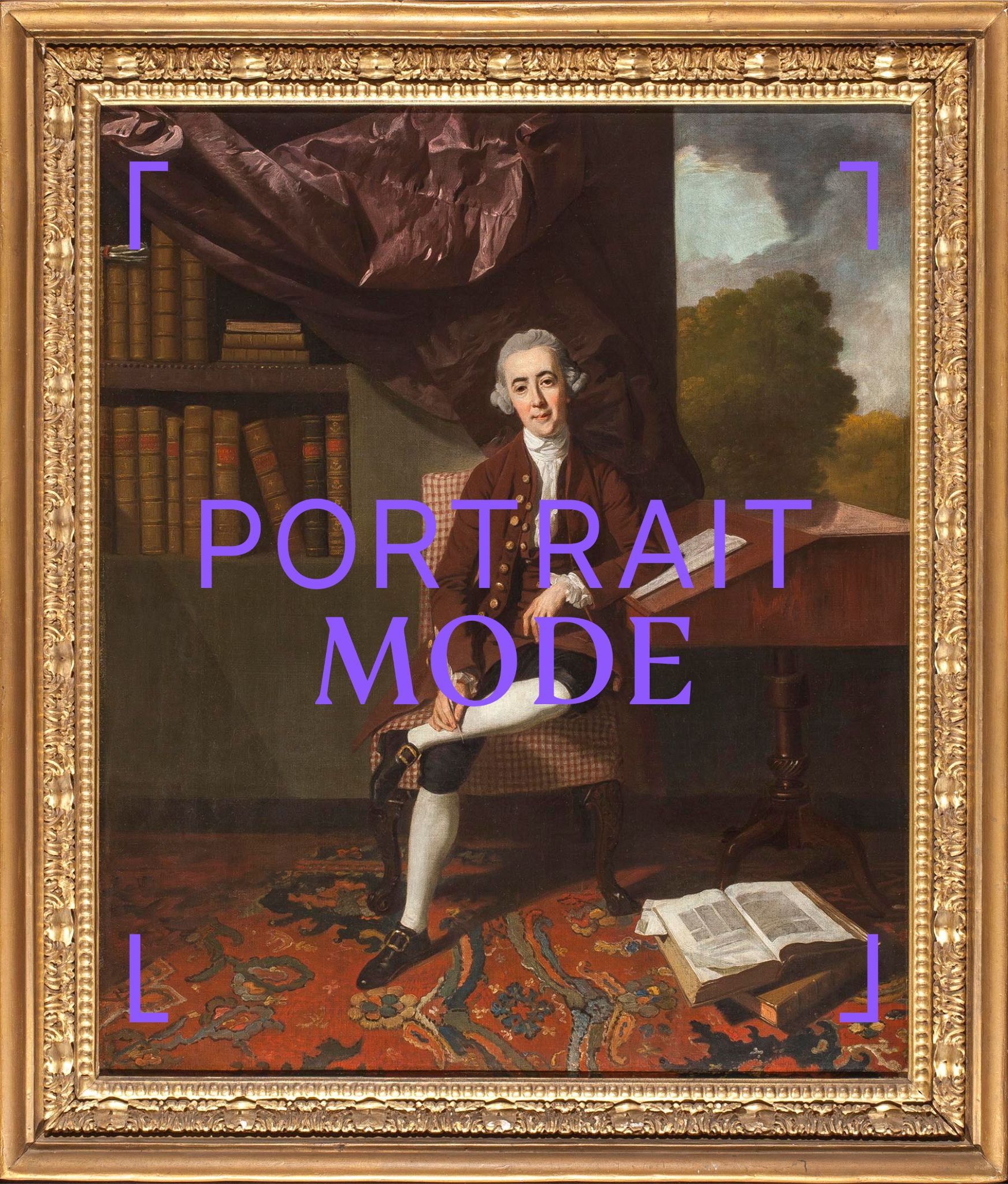Dutch School 1639
A Portrait of a Child of 27 Months standing, Full Length, in a white Costume with a Bonnet and holding a black Feather Fan; with a Doll on a nearby Table

Exhibitions:
Essay:
The child depicted in this lovely portrait wears a dress, as did both young boys and girls in the 17th century. The androgynous costume here consists of a white doublet (with leading strings sewn onto the shoulders) worn over a white linen skirt that is protected by a lace-trimmed apron. Judging by the fine clothing of the child, one would assume the sitter to be of noble birth. The very obvious folds of the apron are said to be deliberately kept sharp to signalise the social status of having staff to launder and starch the clothes of even the babies in the household. The sleeves have precious scalloped Flemish bobbin lace cuffs, while the doublet is festooned with a double collar in lace-trimmed linen consisting of a square bib on top of a flat shoulder collar. Across the child's chest run two rows of gold chain tied with a red and white bow. Red bows also adorn the bonnet; an example of the padded caps worn by babies learning to walk as protection against head injury.
Searching for clues as to the gender of the sitter in our portrait we stumble across some conflicting evidence. In the study of children’s portraits entitled 'Pride and Joy’, Saskia Kuus identifies various gender-determining elements in 17th century art, but warns that these are general rules. We learn from her (specifically in the entry on Paulus Moreelse's portrait of a girl), that the presence of a fan was indicative of a girl. Conversely, a chain worn across the chest like here was seen to denote a boy and would often hold a rattle (or, in the case of the youngest boy in the family, a gold medallion). Young girls would always wear chains around their neck, according to Kuus.
Dolls in children's portraiture almost exclusively female, dressed in adult clothes and held in the arms of a girl (such as that of Catherina van Warmondt in her portrait painted by Isaac Claesz. van Swanenburgh).
We can find no evidence of boys playing with dolls in the 17th century. The male doll positioned on the table in close proximity to the child but, interestingly, not held in the manner of a plaything, is dressed in a black costume with gold passementerie and a wide lace collar. Perhaps we might have to attach a more symbolic meaning to the presence of the doll then: Most males in the noble families across the Netherlands were involved in fighting in the 80 Years' War with Spain (1568-1648), and it seems quite possible that the doll could represent the child's father who had been called away to war, or worse, had died.
We are grateful to Piet Bakker for sharing with us his thoughts on this most intriguing portrait.
Provenance:
Private Collection, UK, since at least the 1930s
